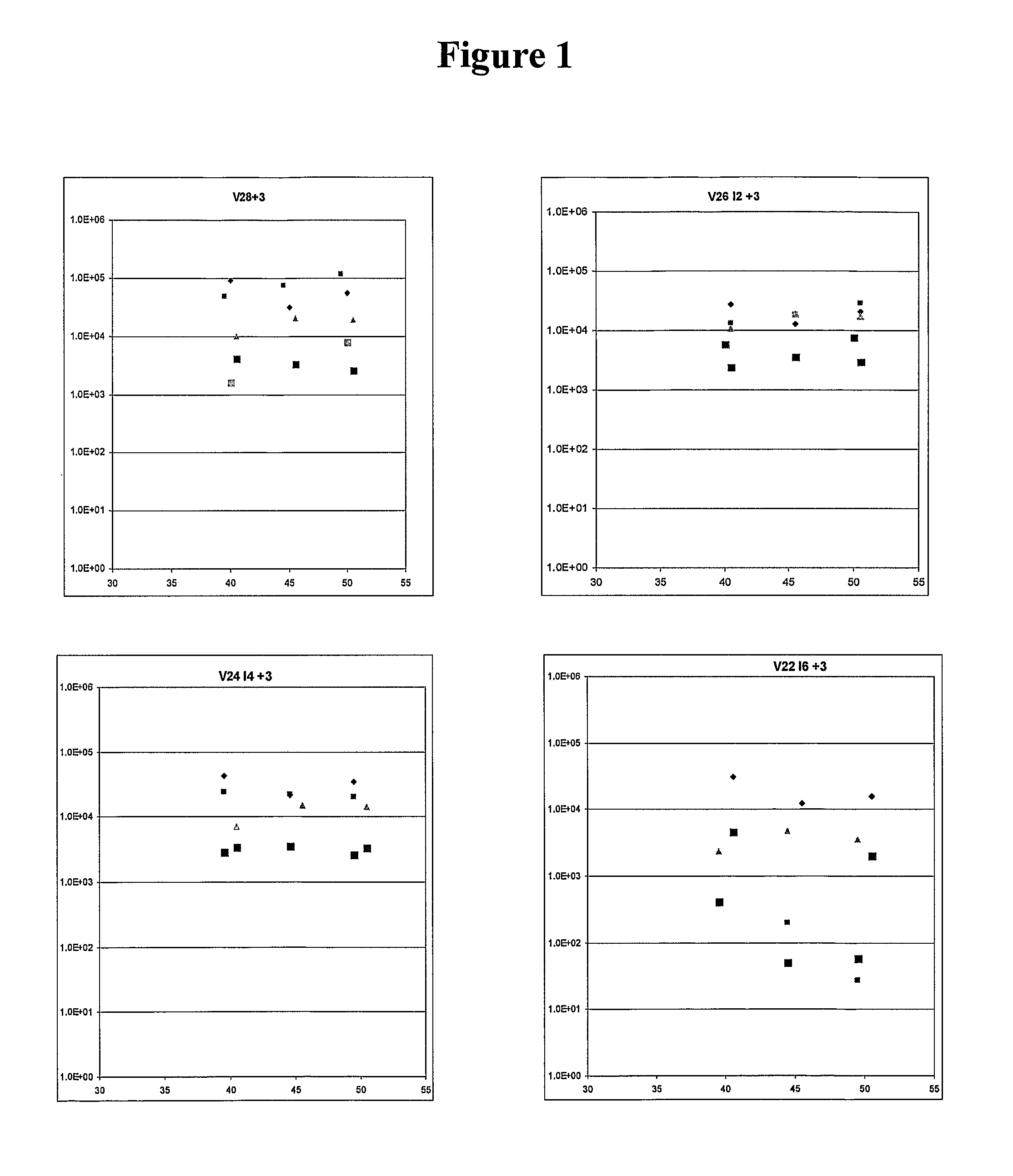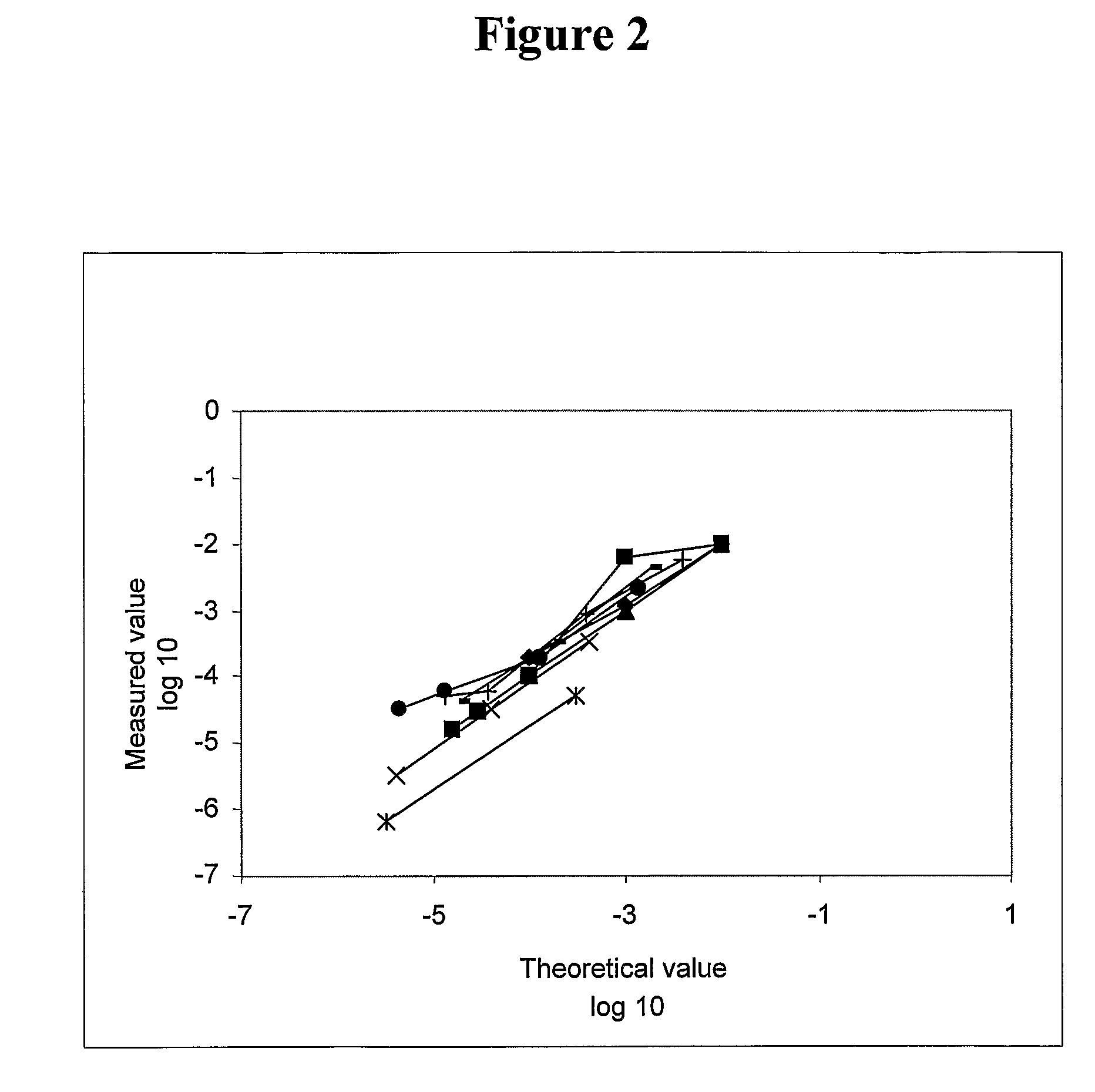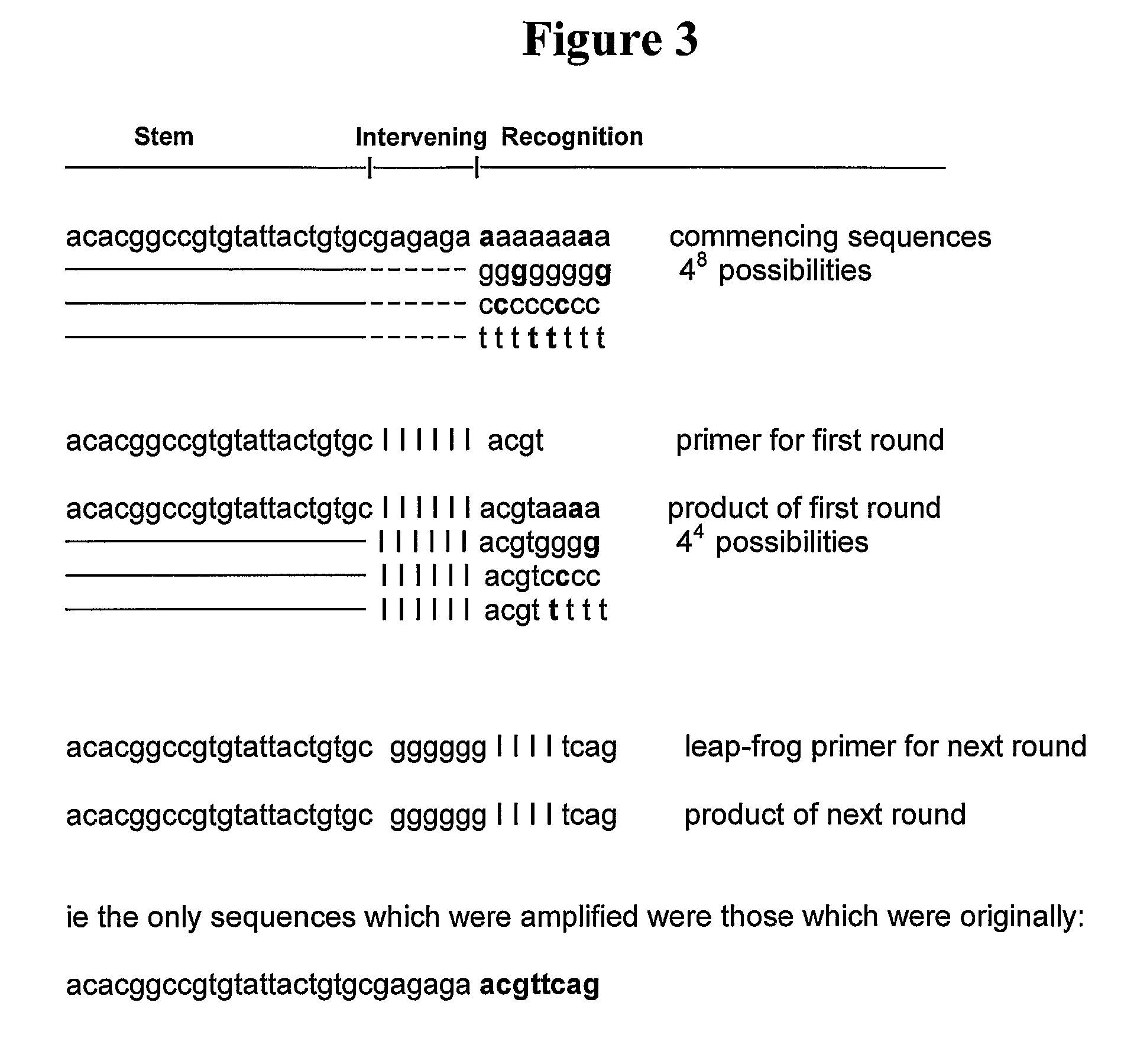Detecting targets using nucleic acids having both a variable region and a conserved region
- Summary
- Abstract
- Description
- Claims
- Application Information
AI Technical Summary
Benefits of technology
Problems solved by technology
Method used
Image
Examples
example 1
[0211]Study of DNA samples from 5 patients with ALL. The effect of inosine number was studied by using primers 31 bases in length and, proceeding from the 3′ to 5′ end, having: 3 bases of perfect match (to the first 3 variable bases of the N region); 0,2,4 or 6 inosines and; 28, 26, 24 or 22 bases of perfect match. The effect of annealing temperature was also studied. The end-point was the amplification achieved by 20 cycles of PCR. Amplification fell below 104 when primers containing 6 inosines were used. In this experiment, temperature had no effect but an effect was seen in some other experiments. The final conditions when using primers directed at 3 variable bases were: primers containing 4 inosines at an annealing temperature of 43 Celsius. Another experiment showed that a primer directed towards 4 variable bases was tolerant to 6 or 8 inosines at 43 Celsius (FIG. 1).
example 2
[0212]Results of detection of low numbers of leukemic cells in 7 experiments in which the leukemic cells were mixed in various proportions with normal peripheral blood cell. Specific amplification of the leukemic cells was achieved by 3 sequential PCRs, the second of which involved a primer containing 4 inosines followed by 3 bases at the 3′ end which matched the first 3 bases of the N region. There is excellent correlation between the observed results and the theoretical results as expected from the mixtures that were made (FIG. 2).
example 3
[0213]
ino-finalPatient / Exptsines3′ basesSiteResult 1Result 2393 / 033944TTGA13.7 × 10 −5395A24.6 × 10 −5396A33.71 × 10 −6397B19.7 × 10 −51.8 × 10 −5398B25.04 × 10 −5399 / 034CGG400A18.1 × 10 −43.3 × 10 −4401A22.43 × 10 −41.22 × 10 −4402A34.47 × 10 −43.89 × 10 −4403B12.53 × 10 −41.46 × 10 −4404B23.4 × 10 −43.3 × 10 −4405 / 034TTT406A11.3 × 10 −61.84 × 10 −5407A29.6 × 10 −6408A36.52 × 10 −6409B13.1 × 10 −52.9 × 10 −5410B21.2 × 10 −57.8 × 10 −6411 / 034CGT412A13.22 × 10 −73.07 × 10 −7413A2414A3415B1416B2417 / 034TCAA418A11.02 × 10 −24.1 × 10 −3419A21.05 × 10 −24.46 × 10 −3420A33.51 × 10 −21.3 × 10 −2421B11.41 × 10 −26.3 × 10 −2422B21.04 × 10 −21.20 × 10 −2102 / 046TTAA90A191A21.76 × 10 −592A393A494A5228 / 046CCGA299A13.9 × 10 −51.56E−07230A21.8 × 10 −51.66E−06231A35.5 × 10 −51.85E−06232B15.28 × 10 −55.72E−06233B21.39 × 10 −59.98E−06179 / 046TGGA180A12.10E−04181A21.85E−04182A38.49E−05183B11.99E−046.81E−05184B28.61E−055.40E−06222 / 046AAAA223A13.91E−052.49E−05224A21.73E−052.26E−05225A33.24E−051.57E−05226B...
PUM
| Property | Measurement | Unit |
|---|---|---|
| Length | aaaaa | aaaaa |
| Length | aaaaa | aaaaa |
| Cell angle | aaaaa | aaaaa |
Abstract
Description
Claims
Application Information
 Login to View More
Login to View More - R&D
- Intellectual Property
- Life Sciences
- Materials
- Tech Scout
- Unparalleled Data Quality
- Higher Quality Content
- 60% Fewer Hallucinations
Browse by: Latest US Patents, China's latest patents, Technical Efficacy Thesaurus, Application Domain, Technology Topic, Popular Technical Reports.
© 2025 PatSnap. All rights reserved.Legal|Privacy policy|Modern Slavery Act Transparency Statement|Sitemap|About US| Contact US: help@patsnap.com



